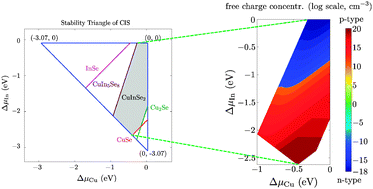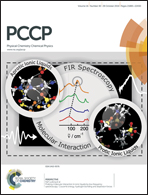Native point defects in CuIn1−xGaxSe2: hybrid density functional calculations predict the origin of p- and n-type conductivity
Abstract
We have performed a first-principles study of the p- and n-type conductivity in CuIn1−xGaxSe2 due to native point defects, based on the HSE06 hybrid functional. Band alignment shows that the band gap becomes larger with x due to the increasing conduction band minimum, rendering it hard to establish n-type conductivity in CuGaSe2. From the defect formation energies, we find that In/GaCu is a shallow donor, while VCu, VIn/Ga and CuIn/Ga act as shallow acceptors. Using the total charge neutrality of ionized defects and intrinsic charge carriers to determine the Fermi level, we show that under In-rich growth conditions InCu causes strongly n-type conductivity in CuInSe2. Under increasingly In-poor growth conditions, the conductivity type in CuInSe2 alters to p-type and compensation of the acceptors by InCu reduces, as also observed in photoluminescence experiments. In CuGaSe2, the native acceptors pin the Fermi level far away from the conduction band minimum, thus inhibiting n-type conductivity. On the other hand, CuGaSe2 shows strong p-type conductivity under a wide range of Ga-poor growth conditions. Maximal p-type conductivity in CuIn1−xGaxSe2 is reached under In/Ga-poor growth conditions, in agreement with charge concentration measurements on samples with In/Ga-poor stoichiometry, and is primarily due to the dominant acceptor CuIn/Ga.


 Please wait while we load your content...
Please wait while we load your content...